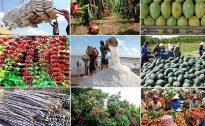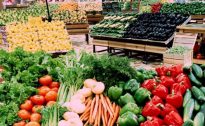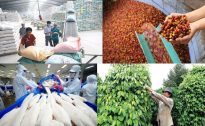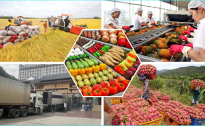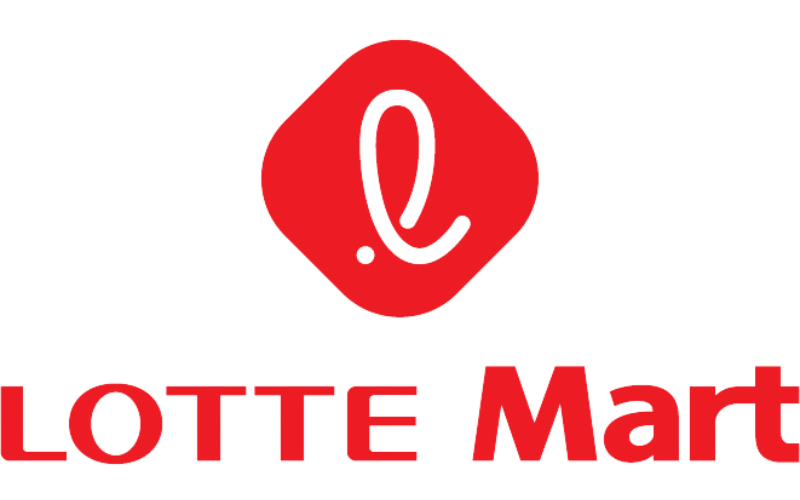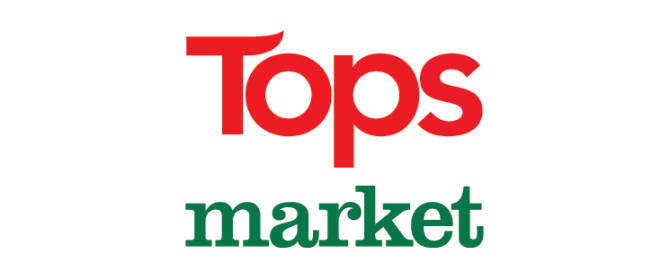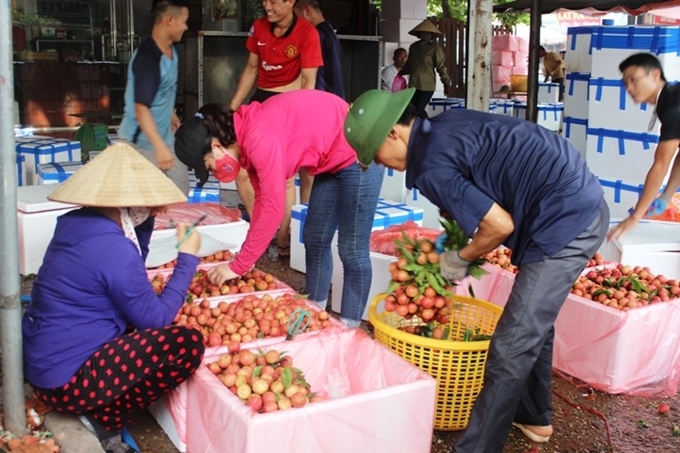
EXPECTATIONS FOR EXPORTING AGRICULTURAL PRODUCTS IN 2023
15/02/2023In 2023, the Prime Minister assigned the Agriculture and Rural Development sector an export turnover of at least 55 billion USD – not a small number. In the current difficult and volatile market context, the Agriculture and Rural Development sector is required to take calculated steps, promptly grasp market information, and flexibly respond to achieve the set goals.
In 2023, the world situation will have many impacts on the export of agricultural products. Which is, inflation continues to rise in the US, Europe and many countries around the world, production supply chain disruptions, and the risk of destabilizing energy security and food security… According to forecasts of the Monetary Fund. IMF, global economic growth in 2023 is at risk of slowing down to below 2% due to the impact of the Russia-Ukraine conflict and economic slowdown in major economies.
Meanwhile, gasoline prices continue to be forecast to fluctuate complicatedly due to fluctuations in political and economic factors. In addition, the increase in the value of the US dollar continues to increase the cost of importing raw materials for production. These factors lead to increased logistics costs, affecting world commodity prices, import and export activities and putting pressure on the domestic price level.
In addition, many new trade barriers appear in the export market such as: The EU adjusts quarantine measures and food safety control for imported goods on January 26, 2023; Market areas under the CPTPP and UKVFTA agreements make important adjustments in regulations on imported goods…
Domestically, the ratio of input material costs for production is still high, leading to increased production costs, which is expected to affect the price level of food groups with a large consumption proportion such as: rice, pork, vegetables, fruits…
According to the Ministry of Agriculture and Rural Development’s analysis of traditional markets, with the US market – Vietnam’s largest export market with main export items including: wood and wood products accounting for 64.5%, seafood accounts for 16.5%, cashew nuts account for 6.2%, coffee accounts for 2.1%, vegetables and fruits account for 1.9%. This is a market with a lot of potential for exporting agricultural products. In particular, the demand for imported agricultural products is forecast to increase in the coming time, especially wood products and pepper are forecast to grow by an average of 1 -2% in the next 5 years; Coffee import demand is forecast to grow by 4.8% in the period 2020-2025.
However, this is also a market with many challenges as the US market’s tastes are increasingly diverse, favoring processed and long-preserved products while Vietnam’s export products are mainly raw products. quality is not high. The number of products allowed to access the US market is still modest, currently only licensed to import 7 types of fresh fruits from Vietnam (mango, longan, lychee, dragon fruit, rambutan, star apple, grapefruit). At the same time, this is also a market that is currently increasing the number of anti-dumping and anti-subsidy investigations against a number of Vietnamese agricultural products (pangasius, shrimp, plywood and wooden cabinets, honey); promulgate regulations to implement the seafood import monitoring program (SIMP), regulations to implement the Marine Mammal Protection Law (MMPA),…
For the Chinese market, it is Vietnam’s second largest export market after the United States. This is also a market with great potential with large consumer demand thanks to its large population and diverse needs. It is forecasted that agricultural trade will continue to be vibrant. In particular, cereal consumption decreased, meat, eggs, milk, fruit and vegetables consumption increased. Fruit and meat consumption is forecast to increase in 2023 as COVID-19 relaxation measures are implemented.
However, with the Chinese market, Vietnam’s agricultural product exports still have some challenges when the majority of Vietnam’s export products are fresh, live products, exported through unofficial channels (fruits, seafood). , has not yet reached the final customer channel, especially the high-end market segment in domestic China. Businesses are still confused when China changes and tightens new policies and regulations on imports; Post-harvest loss rate is still high, logistics costs account for a high proportion; Haven’t built a brand for the product yet.
Another market that cannot be ignored is the EU. This is Vietnam’s third largest export market. This is a market with great advantages in export and attracting investment and technology transfer thanks to the EVFTA Agreement. EU consumers are increasingly interested in products that are environmentally friendly, beneficial to health, and ensure food safety; high consumer demand for healthy vegetables, nuts and high-quality specialty products; Demand for interior wood (especially certified wood) is forecast to grow because the construction market is operating strongly again after the COVID-19 pandemic is controlled.
Similarly, accessing this market for Vietnamese agricultural products is still difficult as the EU is a difficult market with increasingly tightening regulations. Vietnamese agricultural products have not yet built a brand, mainly participating in market segments with low added value (raw goods, processed products as input materials); Logistics costs are still high compared to regional competitors. The ability to access and understand the market is not high; has not yet deeply participated in the modern distribution system and has not built a stable distribution channel in the EU market.
To increase the export value of agricultural products in 2023, the Ministry of Agriculture and Rural Development has proposed many specific solutions. In particular, for key product groups, with crop products, the whole industry will focus on organizing trade promotion and advertising for products that have been licensed to access export markets in 2022 such as: : China (passion fruit, durian, banana), New Zealand (lemon, grapefruit), Japan (longan), United States (grapefruit). In addition, continue to organize trade promotions and promote products that traditional markets have great demand in 2023 such as: the United States (wood, pepper, coffee), China (fruits). , vegetables), EU (vegetables, wood), Northeast Asia (vegetables, spices), ASEAN (rice, wood); Potential markets such as Saudi Arabia (rice, tea, coffee).
Continue negotiations to promote market opening for cultivated products such as: China (sign protocol requiring plant quarantine for dragon fruit, longan, lychee, rambutan, mango; officially open quota for avocado, custard apple, grapefruit); Korean (red dragon fruit); India (longan, grapefruit, rambutan, durian, avocado, coconut, watermelon, strawberry).
With seafood products, focus on removing barriers and opening export markets. In particular, China is requested to consider and update and add businesses and some items to the list of permitted exports to China; discuss with the Japanese side to assess risks and not apply strict handling measures to seafood imported from Vietnam, moving towards the possibility of signing a cooperation agreement on food safety control.
For livestock products, remove barriers and open export markets. Specifically, for the Japanese market, work to evaluate and license the export of processed chicken products and consider opening the import market for some dairy products, fresh and processed poultry eggs. variable. For the Korean market, promote working with Korean authorities to consider early opening for pork, chicken, unprocessed chicken eggs and processed quail eggs.
In order to realize the goal of exporting agricultural products, according to experts, it is necessary to continue to pay attention and improve the quality of analysis and forecasting of agricultural market development orientations. In addition, increase interaction and information exchange with focal point systems in localities, trade counselors in markets, business communities and producers.
In particular, accelerate the construction of concentrated raw material areas for export. Disseminate, educate and train farmers, producers and processors to grasp market requirements well, change thinking in production from quantity to focus on quality and build product brands. Prioritizing the development of key agricultural products and local specialties associated with recognition of geographical indications, certification of organic products, good agricultural practices in production, and application of high technology in conservation. preservation, deep processing. From there, it meets the product quality requirements of the markets.
2023 is forecast to be a year of many difficulties for agricultural exports. However, challenges are always available. Therefore, to overcome barriers, reach the finish line and exceed the export value target, the Agriculture and Rural Development sector needs to proactively grasp information and needs of each market; Quickly remove technical barriers to promote export activities. On the other hand, be flexible in each stage of the market to capture strong products. Along with that, priority is given to organizing activities to search and expand potential markets. At the same time, gradually overcome difficulties and weaknesses of agricultural products to gradually conquer the markets.








